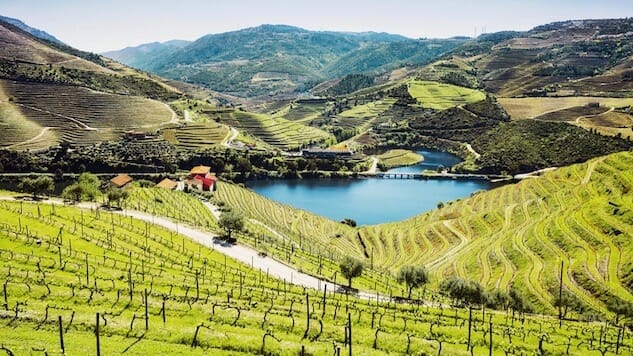52 Wines in 52 Weeks: Understanding Wines of the Douro Valley
Photo via Shutterstock
One of the things that can make reading wine labels a little confusing is that American wine tends to call out the grape varietal, while many European wines are named according to region. “Bourgogne” isn’t a grape, it’s a place, and if that word appears on a bottle of red wine, that bottle is going to contain Pinot Noir. By the same token, Portuguese wines labeled “Douro” come from the Douro Valley, but there are several varietals grown there and they are often blended. In fact, in the Douro area in particular, historically the vineyards have been so mixed that winemakers might or might not know exactly what they were growing, it can vary from vine to vine. While that’s changing, those old, mixed-varietal vineyards are still producing great blends and will do so for decades.
Main grapes you’ll find in a Douro wine: Touriga Nacional, Tempranillo, Bastardo, Tinta Roriz and Tinta Amarela. Styles range from light and clear to dense and chewy, to the fortified dessert beverage known as Port, so this is a region to dig into and explore.
Four Bottles to Try

Quinta do Crasto Douro 2014 Tinta Roriz (Douro, Portugal, $65)
While many Portuguese wines are a screaming bargain, this baby is not; you’ll be lucky to find it under $60. Made of 100% Tinta Roriz grapes, this is a special varietal Douro wine that’s only made in really good years. It’s not a lightweight: opaque purple in the glass, it has a full-bodied, oaky character, with a strong red fruit nose, odd but not unpleasing hints of menthol (that note in a California red usually means the grapes grew near eucalyptus trees; in the Douro I am not sure what accounts for it). It’s powerful and voluptuous with a longer finish than a Broadway show tune. That said, it’s not a diva; indeed I’d call it very food friendly. It probably enjoys red meat, mushrooms, and aged cheeses.